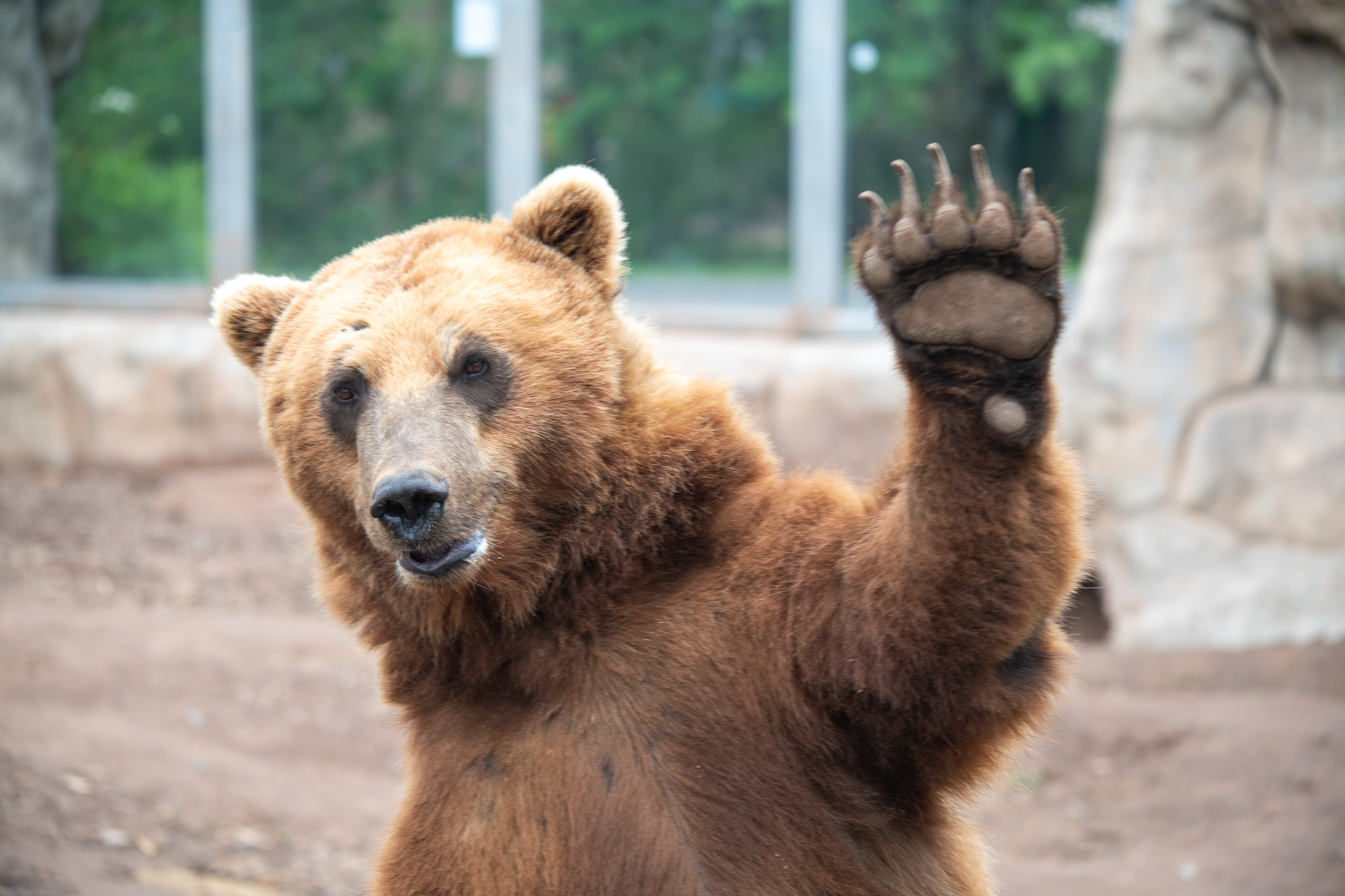Ever wondered what a trip to the dentist looks like for a bear? Luckily for you, we’ve got an answer, and it comes in the form of a brown bear named Tundra receiving a first-of-its-kind, big ol’ metal tooth cap – one that is apparently the largest veterinary crown in the world.
Tundra – who, we have to say, looks far more dope with his new metallic chomper than Bond villain Jaws – is a resident at Lake Superior Zoo in Duluth, Minnesota. According to a social media post from the zoo, he first fractured his tooth back in 2023, at which time he received a root canal.
While the procedure was successful, Tundra went on to reinjure his tooth. The best next step was to find a way to keep the bear’s vulnerable gnasher protected for the rest of his life – and that meant it was time for him to get a crown.
Dental crowns are tooth-shaped caps made out of hardy materials, like metal, that are placed over existing teeth, usually those that are weak, decayed, or broken (like Tundra’s). It’s a method of tooth restoration that can be used for lots of different animals, including cats, dogs, and yes, us humans.
In a procedure led by veterinary dentist Dr Grace Brown – who is quite possibly the bravest person we know of, having put her fingers that close to a bear’s mouth, even if it was knocked out – and supported by zoo staff and dental laboratory Creature Crowns, Tundra received what the zoo says is “the largest veterinary crown ever created in the world.”
Tundra is also thought to be the first ever bear to have a full metal crown placed, something that likely didn’t come cheap – we all know how expensive human dental work is, let alone for an animal with teeth far bigger than ours. That could’ve been a hurdle for the zoo, a non-profit relying on admissions, fundraising, and donations in order to operate and care for the animals (you can find out how you can support the zoo here).
The good news is that all of Tundra’s care was donated, and he can now go and live his best life being frustratingly friend-shaped and shiny-toothed. Lake Superior Zoo’s Marketing Manager, Caroline Routley, told IFLScience that he “likes to stand on the big rock in his habitat”, from where he spends his time catching treats. Icon behavior.

The legend that is Tundra.
Image courtesy of Lake Superior Zoo.
As far as we know, there is no sport known as extreme dentistry, but if there were, this would surely be a contender, along with the brave vet who recently gave a tiger root canal surgery. Treating Rico the sloth is perhaps more our speed.
Want to know more about animal dentistry? In an episode of Iflscience’s We Have Questions podcast, we spoke with Peter Kertesz, Dental Consultant to ZSL London Zoo, who told us about all the kinds of creatures he’s worked on.
“You name one, and I’ve seen it,” said Kertesz. “We’ve seen aardvarks, which are very difficult to operate on, big cats, elephants, sea mammals, sea lions, seals, walruses, dolphins, gorillas, chimpanzees, sloths, pygmy hippos, rhinos, bears…”
To find out more about what it’s like doing dental work on non-human species – and why animals don’t have to brush their teeth – you can listen to the full episode conveniently placed for you above, or here.
Source Link: World’s Bravest Vets Put Full Metal Dental Crown On A Bear For The First Time